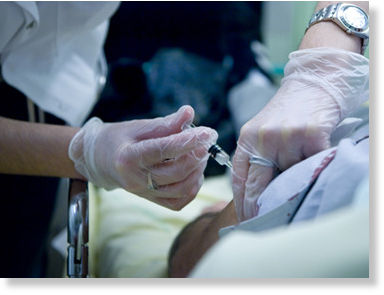
© Agence France-Presse/Martin BureauMorphine: not guaranteed even for the dying.
A nationwide drug shortage has left American hospital patients untreated and in pain. Manufacturing problems have left emergency care providers without some of the most crucial medicines, putting lives at risk.
More than 100 drugs were put on the shortage list this year, prompting Congressional hearings and leading to an executive order by President Barack Obama, which forces drug companies to publicize their shortages.
Health care workers have had no other option than to ration some medicines, giving it only to patients that need it most. Paul Davis, the chief of a rural ambulance squad in Ohio, told the
New York Times that he was unable to give morphine to a woman with a broken leg because he was saving his last pills for patients he thought needed it more.
Elsewhere, desperate health care workers are treating patients with expired drugs and less effective medicine. Those with cancer have been hit particularly hard. About 80 percent of the drugs in short supply are generic medicines for injection, including the chemotherapy treatment drug Doxil, WFTV reports. Sodium bicarbonate injections, which are used to stabilize critically ill patients suffering from sepsis, heart attacks or other cardiac problems, are also in short supply.
"When you can't treat basic things - cardiac arrest, pain management, seizures - you're in trouble. When you only have five tools in your toolbox and three of them are gone, what do you do?" Dr. Carol Cunningham, state medical director for the Ohio Department of Public Safety's emergency services division, told the
Times.

Comment: The true measure of a society is the standard of living of its weakest and most vulnerable. Only in a severely decaying society would suicide be the leading cause of injury related death.